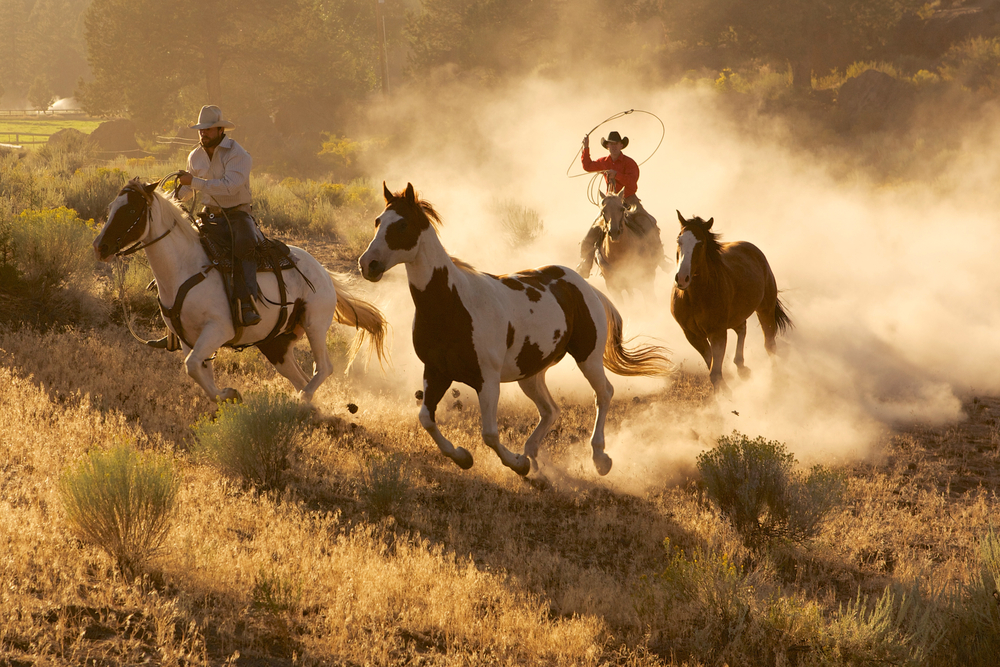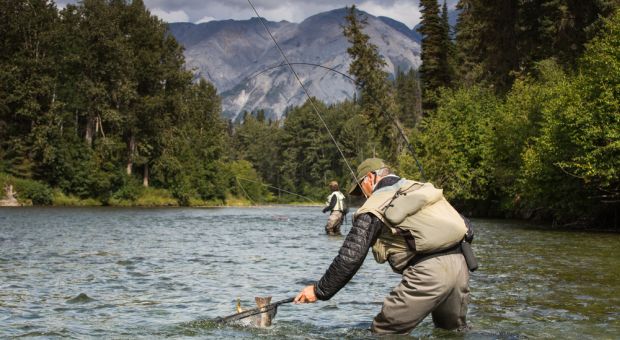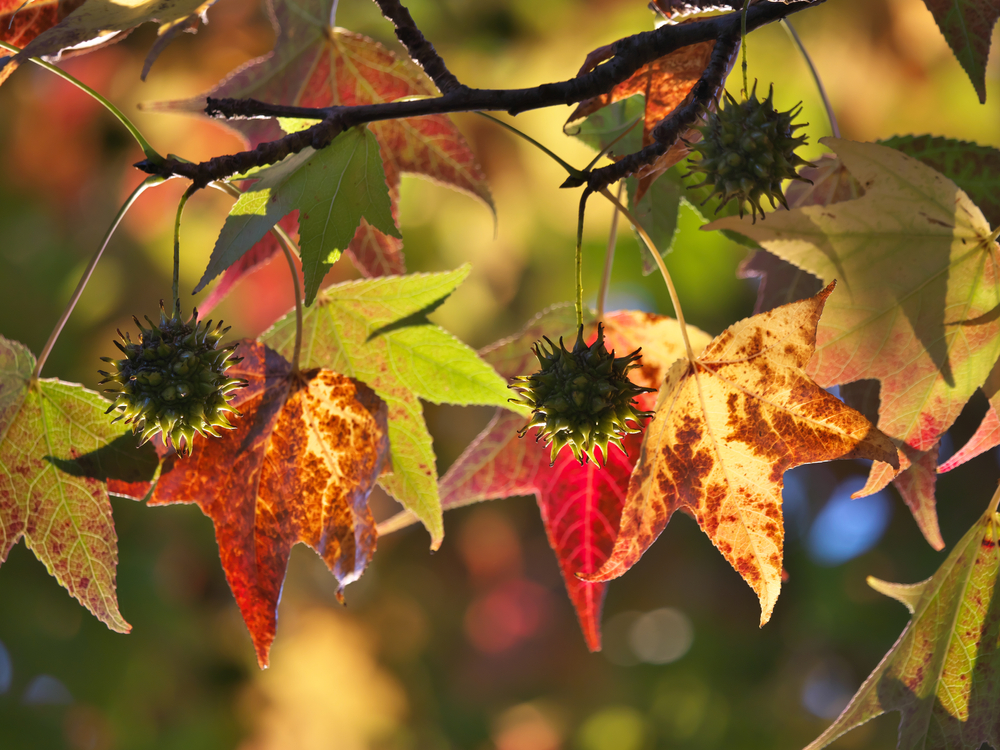There’s a lot to be learned about survival by looking at those who went before us. I’m not talking about people who lived in the 1950s, but people who lived in the 1700s and 1800s.
For most of those people, every day was about survival. They lived a lifestyle considerably different than the one that you and I enjoy. But because it was about survival, the knowledge those distant ancestors commonly held is in many cases superior to what you and I know today.
On the flip side of that coin, those people survived without any of our fancy survival gear. Instead, they used what they had and what they had wasn’t always the best, most perfect gear for survival. Yet they made it work. They made it work because they had to; there wasn’t any online seller who could offer them something better, and the stores they shopped in usually had a limited inventory. But what they did have was creativity, the creativity to take what they had and find ways of turning it into what they needed it to be.
Take the cowboy as an example. The American cowboy supposedly first started in Pleasanton, Texas, a little town near San Antonio. It was there that the Mexican vaqueros taught their American cousins how to handle cattle on the range. That was new, as cattle in the east aren’t raised anywhere near the way they were in the Wild West, especially in Texas.
One of the big problems with raising cattle in many parts of the west, but probably especially in Texas, was water availability. Or perhaps I should say that it was the lack of it. Much of the western cattle range is an arid country, meaning little water for the cattle to drink and little grass for them to eat. People measured land back then in how many acres it took to raise a steer, not in how many steer they could raise per acre.
With cattle ranging free, cowboys were needed to herd, care for, protect, round up, brand, and drive those cattle to the railheads for sale. The lifestyle and work were hard, with every day holding dangers from rustlers, Indians, wild animals, the weather, and the cattle themselves.
Cowboys had to be ready to deal with all that, and they did it with what they could carry on their person and their horse. They’d have a blanket roll back in the bunkhouse, where they kept a couple of spare changes of clothes and a few personal items. When they went on trail drives, that blanket roll came along, sitting in the chuck wagon. But unless they expected to be out overnight, the daily work of the cowboy and the dangers they faced were done with what they had on their person and what they could carry in their saddlebags.
We could say that the cowboys lived a constant life of bugging out, at least in form, if not in goals. Some, who didn’t have a ranch that they worked on regularly, lived more on the trail than in the bunkhouse, making their life look even more like a bug out.
An Encyclopedic Memory of Trails and Campsites
Since cowboys didn’t have maps or the internet, their knowledge of where they were going was often limited to what they learned from talks around the campfire. Amongst other topics, such information was passed on from one person to another, providing accurate enough descriptions so that those who had never seen a piece of the country could recognize it when they rode it.
It was this knowledge that allowed cowboys to travel safely, even when covering great amounts of ground by themselves. They knew where to find water, where to find shelter, and which Indian villages would instead trade with you than fight.
The Cowboy’s Horse
The horse was the cowboy’s transportation. Many owned one horse and used several others. Those others belonged to the ranch they rode for. Assigned to them as part of their “string,” the extra horses allowed them to give their leading horse a break, as the work they did would tire the horses out faster than the cowboys who rode them.
Horses are practical in that they eat what they find. Keeping a horse fed and watered is much easier than keeping a truck filled with gas. Horses can also go places the best four-wheel-drive can’t think of going unless you want to take chances with that vehicle. While the cargo capacity is limited, that is quickly resolved by using a packhorse or two.
The other great thing about horses is that they make a great night watchman. Anything out of the ordinary will awaken the horse and cause it to blow. Once you become attuned to that sound, you can rest easy, knowing they’re watching over you.
Their Guns
While Hollywood has made it look like every cowboy was a gunslinger, just looking for their next fight, things weren’t that way. While many cowboys packed a sidearm, it was mostly for protection from natural predators, not outlaws. Conflicts with Indians were more common than those with outlaws, as anyone foolish enough to turn to crime had to realize that they were trying to ride roughshod over men who had fought in the Civil War. Even townspeople were ready for trouble.
But life is dangerous, and the cowboys recognized those dangers even better than you and I do today. So they were ready to deal with it, from wherever it came. They weren’t professional warriors, but they remembered the days of war and were forever changed by them.
A Good Knife
Cowboys didn’t have all the tools in their kit that we have today. There were no wire saws, no hatchets, and no multitools. You could probably find an ax back at the ranch buildings or even in the chuck wagon, but they certainly wouldn’t weigh their horse down with one. So no, unless they were on a specific mission to repair something for the ranch, the cowboy made do with a good sheathe knife as their entire tool kit.
Keeping a knife sharp in the wilderness isn’t much of a problem, especially if there are streams nearby. But, unfortunately, many a rock plucked out of a streambed became a makeshift honing stone and was thrown back in the water when the user was done with it.
Rain Slicker
The entire shelter of the cowboy consisted of a rain slicker and their blankets. Some had a groundsheet as well, although many made do without it. The rain slicker would keep them dry in the saddle and then cover their blankets at night, keeping the rain from soaking them. It could even be used as a makeshift shelter, using it to cover up a lean-to framework.
That’s not to say that cowboys were usually without shelter. When working the ranch, they would rarely range farther out during a day’s work so that they couldn’t make it back to the bunkhouse at night. But they were also typically experts at building improvised shelters from whatever materials were at hand.
Tinderbox
The tinderbox was one of the more essential pieces of survival gear that the cowboy carried. Varying considerably in style, they included a metal sparking iron and a piece of flint, along with material to use for tinder. Cowboys would replenish this material whenever they found it, ensuring that they were ready to start a fire at any time and in any place.
Later, matches caught on, and many cowboys carried those along for convenience. They weren’t the nice wooden strike-anywhere matches we know today, though. While these would strike anywhere, they tended to be smaller, meaning that it was necessary to get the tinder to catch quickly. For people accustomed to starting a fire with flint and steel, that wasn’t all that big a deal.
Canteen of Water
Cowboys carried canteens ranging from two quarts to a gallon. That generally had to be enough water to get them and their horse through the day. They’d camp by water in most cases, and the home ranch was permanently sited where water was available. But in the heat and sun of Texas, that canteen of water didn’t go very far.
When arriving at the water, the first thing that any cowboy did was to dump out whatever water was in their canteen and refill it, ensuring that if they had to leave quickly, at least they’d have a full canteen. Once they did that, they’d set up camp or whatever they had to do.
Those canteens were covered with layers of cloth, sewn there by the cowboy himself. When they dipped their canteen in the water to fill it, that cloth would become soaked too. Then, as the water evaporated, it would cool the water held inside.
Food
You could always find a few day’s worths of a grub inside a cowboy’s saddlebags. It might not be enough to make a decent meal out of, but it would be enough to keep them going. Hardtack was the most common, along with salt pork or bacon, Jerky, pemmican, and coffee. If they could get it, they’d also carry along some dried fruit.
Cookware
While it was a bit hard to carry along, most cowboys would have at least some cookware with them. That would consist of a small pot, a coffee pot, a tin plate, and a cup. While not much, it was enough for him to put a meal together with and especially to make a cup of coffee. For trail hands who worked 14 or more hours a day, coffee was necessary.
Fishing Line & Hooks
Cowboys were accustomed to living off the land. Hunting was a normal part of the day, not that they would set aside time to hunt, but that they always had their eyes open for game. Then, when the opportunity arose, they’d bag themselves something for dinner.
Fishing was the same way. To a cowboy, fishing meant catching dinner in a few minutes, not sitting beside the stream or lake, taking a nap. When they had the opportunity, and the hankering hit them, they’d bait a hook with worms, crickets, or whatever else they could find and try to catch some fish for dinner.
Chaps
Not all cowboys wore chaps because not all cowboys rode in terrain that required them. But the cowboy was a highly adaptable creature, so those who rode through a lot of brush either made or traded for a pair of chaps to protect their legs. While not a piece of survival gear to our way of thinking, they indeed were to the cowboys who used them.
Bandana
After having survived COVID, any of us should appreciate the idea of wearing a bandana. They weren’t concerned about viruses, though; they wore the bandana primarily as protection breathing in dust. A bandana covering the nose and mouth is a good filter for that, even if it doesn’t work too well to catch viruses.
But the bandana could do more. It readily adapted itself to a washcloth for bathing, a filter for removing sediment from water, or a bandage for covering a wound. With limited equipment available to them, cowboys were very creative in using what they had.
Hat
Few people in the prepping community mention them as such, but hats are valuable pieces of survival gear. For those in cold climates, hats help protect the head, keeping in body heat. Considering that a quarter of the body’s blood supply goes to the head, wearing a hat to keep your head warm makes a whole lot of sense.
In the heat of Texas and even more so in Mexico, the hat was necessary as shade, protecting the neck’s head, face, and back. In addition, the Mexican sombrero, which had some influence on the classic cowboy hat style, provides even more shade, helping to keep vaqueros cooler in the summer heat.
Coat
Just as now, the coat is an essential part of protecting ourselves from cold weather. You’d never find a cowboy riding out from the home ranch without their skin on or tied to the back of their saddle. In addition, weather can change quickly, making it necessary to keep warm when the temperature drops quickly at night.
Few cowboys wore gloves, as they were harder to make. So instead, they primarily wore mittens. While it’s harder to work with mittens on, they have the advantage of keeping the hands warmer, as the fingers are all together, where they can share their heat. In addition, a slit on the inside of the mitten would allow the thumb to slip out when necessary to grasp something.
Piggin’ Strings
Before there was paracord, there were piggin’ strings. These are strips of cowhide, usually cut from scraps of leather and used as cordage. Intended chiefly for tying the legs of a thrown cow together while branding it, cowboys soon found them to be helpful for a wide variety of things, whenever cordage would otherwise be needed.
Tobacco
Even cowboys who didn’t smoke usually carried a bag of tobacco on them. It was one of the more common items of trade goods in the Old West and a sure way of showing good intent to the Native American Indians who lived there. Cowboys might also offer tobacco to others they encountered along the trail to signify their good nature.
The Cowboy’s Bed Roll
A cowboy carried their full bedroll about the only time when they were moving from one ranch to another. Extra hands brought on board at branding time might need to move on once the roundup and branding were over. In that case, they’d tie their bedroll behind the saddle, making it easy on the trail so as not to overtire their horse.
When going out from the ranch, checking the range, or on some other task that might keep them out overnight, a cowboy would often make up a temporary bedroll out of one blanket and their slicker, tying that behind their saddle. While not much, it would usually be enough to get through the night.
They’d leave the other things that might typically be in their bedroll back at the bunkhouse for those forays. Cowboys didn’t have much, but what they had was precious to them. They might have an extra gun, with some spare magazines, a few light shirts, one good set of clothing, a book or two, and a picture of someone special to them.
We don’t usually think about it, but many cowboys were voracious readers, consuming everything they could get their hands on. Many were well-educated men who were accustomed to reading before moving west. Even those who weren’t read newspapers and magazines to keep up on the news. Books, printed as advertising, were traded back and forth, with some crossing the west time and time again.















































































The Cowboy of yesteryear reminds me of todays backpacker
Fun reading, Bill. I grew up on a ranch in the 40s and early 50s. Brought back some memories, for sure.
Like you said: they traveled light and occasionally sat by campfire talking to locals acquiring information about how local folk often handled needs. There are oil paintings and picture prints showing adult Indians on horseback dragging Teepee poles on each side of their horse and along the ground behind the house dragging their shelter material and some supplies. This horseback hauling strategy may also have been used when hunting buffalo and hauling furs, heavy skins and preserved meat. When I moved to the high plains of E Colorado and mentioned that I wanted to walk the prairie and explore it I was told to wear two pair of jeans, with the outer one being very loose and baggy. If a rattlesnake was spooked and struck out to bite, its fangs would catch the loose-baggy outer jean, pull on it, drip its poison into the outer pant and likely spare me of a bite. I did that until I bought snake pant chaps that were a tight weave and waterproofed with a plastic like material. All chaps are is a second pair of pants with a belt loop to hold them up at the waist and an open crotch area. In Colorado they protected against snake bites, insect stings, and periodic weeds with prickers (locally called “Texas Tacks” should I slip and fall into them. I have used the chaps in many geographical areas and as “gaiters” (tied to boot-ankles and reaching to waist) to keep deep snow out of boots at the ankles, and to walk through brambles with prickers. During spring dews they keep jeans dry, though spending time wearing them causes legs to sweat and dampen interior jeans. When exploring around bolders and tailings (similar to rock slides) it is easy to slip and go down onto one’s knees, so the chaps help prevent bruising. Meeting up with a feral (wild) kitty cat or feral house dogs is not a problem when they try to scratch or bite at the lower legs, because their claws and teeth just slip off the material (and in the mean time they get a “kick” from me). I married a gal highly sensitive to poison ivy and oak. She never handled it, but if she walked through it without realizing it and got poison ivy oil in her jeans, then washed them, she would get poison ivy on her hands. I regularly walk through poison ivy and almost never get a blister. Waterproof Chaps help with that too since they don’t absorb moisture. I never wash them because they are designated “dirt” clothes–a second pair of pants–if they are muddy I hose them off in the yard and hang them up to dry. I suspect all chaps are noisy when walking and as the inner thigh of one leg brushes or sweeps against the inner thigh of the other leg. Deer will hear that if you are walking. When I count all the days in a year when there is over a foot of snow on the ground, and when morning dew beads on shrubs along the trout streams that I walk (because the biggest trout is in the most “mean and difficult” places to move through, and when I am walking through pricker places, or exploring what would be equivalent to tailing slopes, or and even gardening on my knees in raspberry patches and damp ground after a rain–I consider my chaps to be essential. In a SHTF a lot of power equipment won’t be used, yards will turn into tall grassy fields, people will be scrounging. Jeans won’t deter ticks, chiggers, poisonous spiders, feral cats, Many guns are carried in holsters. Chaps are legging holsters. In a BO camping type SHTF you need functional legs as much as hands and arms, and a head that is not feverish. Chaps go a long way in providing walking protection. I consider them essential 4-season gear in the overgrown places that are easiest to hide in and avoid people trouble..
The article is about cowboys, and what is the author’s visual example? A horse being trained at the end of a long lead outfitted with an English riding saddle!!!!!!! Oh my goodness. That picture followed by a couple of modern day fly fishermen outfitted in chest waders and a vest. Seriously, Bill? You couldn’t find a couple of stock photos to go with the article?
I wonder if a level headed mule would be a better companion than a horse. Mules are tougher, able to eat more variety and are more hardy creatures. Not as fast as a horse fhough.
Snake pants, and boots are extremely hot. The plastic gsiters are lightweight, but are noisy in thick cover. Never heard of the baggy jeans but it does make sense. Once contact is made with fangs, they are quickly pulled out.
Read a book some time back about goatherding in the desert. Goatwalking ? Author last name Corbett Can be trained to carry some weight, milked for liquid and butchered for meat. Maybe for the desert scrub regions.
Most interesting and I liked the comments also.
I only found one strange issue. Since the reference to many cowboys was about the Civil War time, I thought it was strange to mention that in the blanket roll there might be an extra gun and spare magazines. In the time referenced, most handguns =were revolvers and spare magazines would not work in them.
In more modern times, spare magazines could be appropriate
While you mentioned pretty much every part of cowboy garments, you complitely skimmed out on how important their boots are. It’s akin to modern work or hiking boots : sturdy, reliable, with almost no need for major repairs. Those boots were(and argueable are) extremely important. Even right now cowboy boots are relevant and amount of manufacturers only keeps growing. Personally, I own 3 pairs of those: one that I got ages ago from Ariat and 2 relatively new pairs from Twisted X https://gritroutdoors.com/twisted-x/ It’s great to walk in and go on long walks or even hikes. Other than that it’s a great article, slight lack of photoes but very informative!